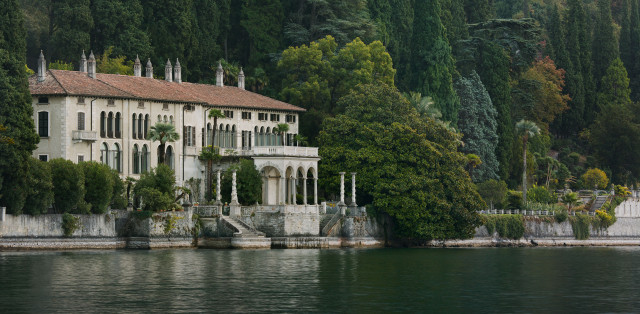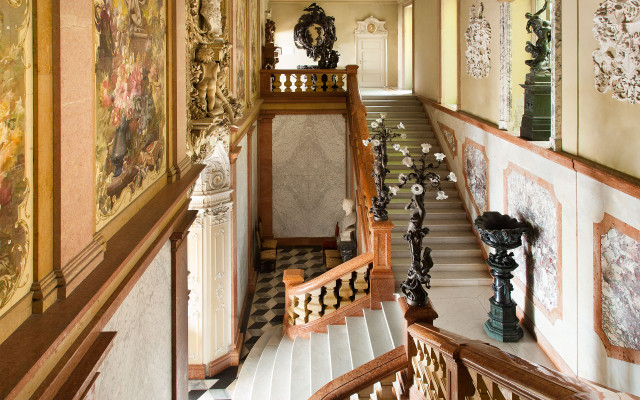Villa Monastero is managed by the Provincial authorities of Lecco and opens from January to October, with visitors able to walk in the gardens or visit the grounds and the museum of the Casa Museo. Opening times vary at different times of the year, so it is best to check at villamonastero.eu. Entry tickets are available on site.
Photography by Francesco Arena
There is harmonious imperfection in the array of arches and spiral columns of Villa Monastero. An overlapping of different stone, plays of light and shade, and open and filled spaces together tell a story that is no less than nine hundred years old. Eclectic and sinuous, the villa leads the eye at a constantly changing pace as the estate’s rhythm changes with every view, and all set hard against a dominating mountain backdrop.
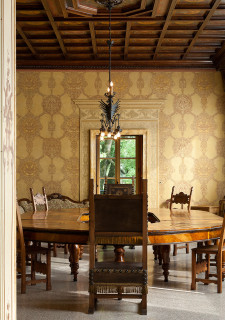
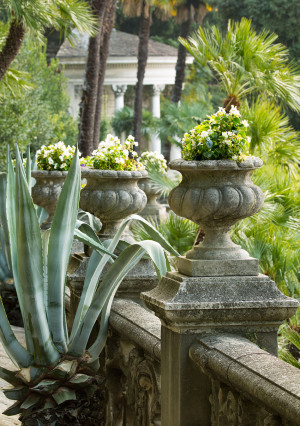
On the jagged banks of the eastern shore of Lake Como, in the village of Varenna, Villa Monastero is a unique building. It embodies layers of styles, jostling one with the other, that have shaped this place over its nine centuries of history. What we see today, the long façade, interrupted by a waterfront balcony with a grand stone stairway that leads down to the lake itself, is the result of an intricate combination of architectural styles that have transformed a simple nunnery into a great house, richly embellished with captivating artistic highlights. The 12th century Cistercian structures were purchased in the mid-sixteenth century by Paolo Mornico, from Cortenova in Valsassina, but it was not until 1607 that Lelio Mornico, the future Podesta of Lecco, established his home here by building what would become known as Villa Leliana. Since that time a succession of works of architectural ornamentation have transformed the building with a mixture of neoclassical elements, a nod to classical Greece, Renaissance visions, the Baroque, medieval architecture and features of purely exotic flair.
The greatest refurbishment of them all was that of 1897 to 1909 by Walter Erich Jacob Kees of Leipzig, who also extended the garden where still today his botanical rarities and indigenous varieties can be seen growing harmoniously together. In 1936 Villa Monastero became public property at the will of the Milanese naturalist Marco De Marchi. The villa and its grounds were then opened to visitors and the estate also became a congress centre. Among the most beautiful of the congress halls is that overlooking the lake, bearing the name ‘the Enrico Fermi room’, after the Nobel Prize winning physicist who there gave some of his famous lectures in physics.
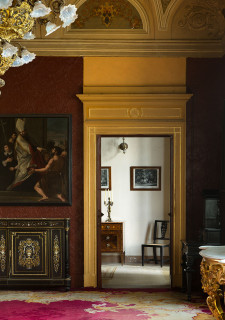
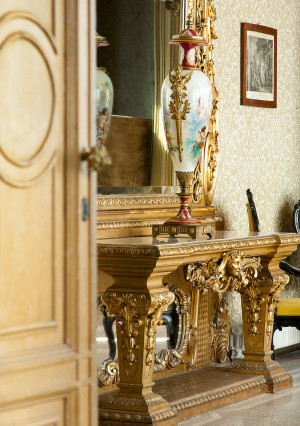
In the seventies the property passed to the National Research Council, managed firstly by the Provincial authorities of Como, and then by those of Lecco, which established the house as a museum. Fourteen perfectly furnished rooms provide a tour of the diverse styles that hosted prominent figures on the Italian and European cultural and artistic landscape. Precious things, staircases, lamps, decorations and furnishings bring life to such luxurious spaces as the Billiard Room, the Music Hall, the Mornico drawing room and the main hall, allowing the modern visitor to wallow in its all pervading sense of history.

